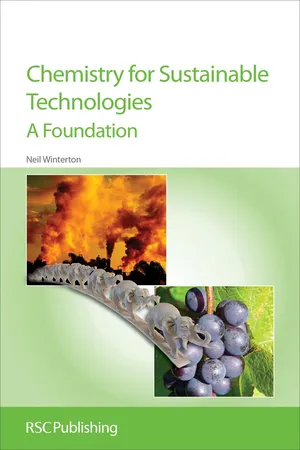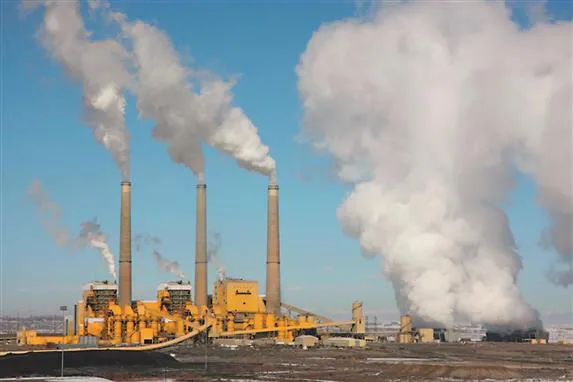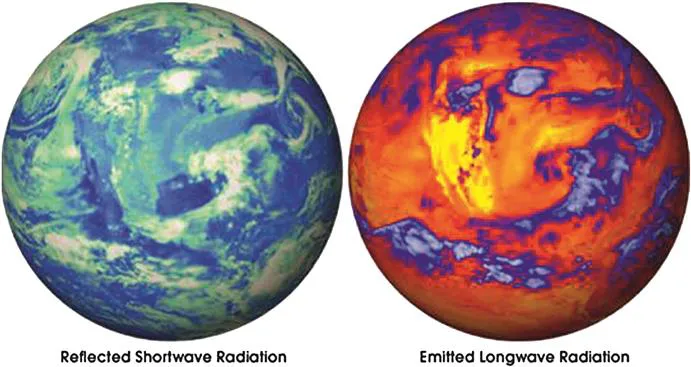![]()
CHAPTER 1
Scope of the Book
‘For every human problem, there is a neat simple solution. And it is always wrong!’
H. L. Mencken
Chemistry for Sustainable Technologies: A Foundation is intended to be a different type of book. While the treatment attempts to be rigorous, it treats the chemical fundamentals quite broadly, connecting material found in a range of more specialist courses and books. Aspects of other disciplines, relevant to sustainability, are introduced, considered and explored.
The book is also designed to help the reader, particularly students of chemistry, understand the scientific method (and, as a consequence, more consciously to think as scientists)—something not formally taught in undergraduate chemistry courses. In addition to encouraging the use of these tools to get to (and to interpret) the underlying evidence behind the images and headlines we see in the media and on the internet, the book more conventionally does the following:
- explains the concepts and terminology of sustainability and sustainable development and the associated complexity, inter-relatedness and uncertainty;
- highlights the necessary role of science and technology in the transition towards sustainable development;
- exemplifies new approaches to chemistry driven by the need for more sustainable chemical technologies; and
- illustrates the central role of metrics in the critical and comparative assessment of the sustainability of technologies.
The aim is to equip the reader to:
- understand the basic terminology of sustainable development and chemistry for sustainable technologies (also known as ‘green’ chemistry);
- appreciate the non-rigorous nature of this terminology and its consequences;
- place chemistry and chemical technology in a wider societal context;
- recognise the importance of thermodynamic principles in judgements about what may be considered sustainable;
- recognise the strengths and weaknesses of green chemistry; and
- appreciate the importance of catalysis and the use of renewable feedstocks in developing sustainable chemical technologies and the challenges associated with their implementation.
The topic of sustainable development, the factors driving it and efforts being made to bring it about continue to change over time. To maintain currency, I refer to websites and weblinks that may be of use as starting points to supplement the material to be found in the academic peer-reviewed literature. The extra care needed when using such web-based material is discussed in Appendix 1.
To keep the scope of this treatment manageable but while meeting the book’s prime purpose to provide a foundation to the topic of chemistry for sustainable development, there will be some matters that are not explored in the detail to satisfy every reader. In these instances, I point to accessible and peer-reviewed sources of additional information which readers could profitably explore further.
The selection of topics addressed and the examples used to illustrate them are governed, to a large extent, by the fact that this book is aimed primarily at chemists and chemical technologists. The selection I have made is different from that which those with other specialisms and interests might have made. That this is so is a reflection of the complexity and inter-relatedness of sustainable development and sustainability (Glaze1 called this ‘hyperdisciplinarity’), something that it is important, at the outset, to recognise. The role of chemistry, and of science itself, is shown to be critically important. While absolutely necessary, however, neither is sufficient.
The main themes covered by this book include:
- Sustainability and sustainable development: the impact of climate change
- Science: what is it and what is its role?
- Carrying capacity of the Earth; the ‘master’ equation and our reliance on technology; ecological footprints; can humankind survive?
- The ‘Gaia’ principle (or Earth systems science); environmental chemistry
- Waste and its minimisation; pollution and its prevention: historical and modern perspectives
- Metrics, life-cycle analysis and chemical technology: the process and product chain; technological integration and industrial ecology
- Importance of the Second Law of Thermodynamics: the concept of exergy
- Green chemistry: principles and pitfalls; contributions from new chemistry
- Central importance of catalysis
- Renewable feedstocks: the transition from fossil sources; what are the constraints; biotechnology; the ‘biorefinery’
- Energy production: prospects and timescales
- The chemist as citizen: a statement of the challenges.
The theme running through the book is chemistry’s central importance both to our attempts to understand the environment and the lifeforms that populate it, as well as to our efforts to develop ways to make the demands of the human population on the planet’s resources (and its associated impact) more sustainable. The technological application of chemistry requires some basic understanding of process engineering and process economics and these are introduced as part of the foundation that represents the purpose of this book. Furthermore, this foundation also encompasses the economic and social context (and associated political ramifications) of technological development, particularly relating to the challenge of climate change.
The book tries not to be polemical: it takes no position in areas of controversy, but seeks to reflect my best personal assessment of the consensus position. It is worth pointing out that a consensus view (such as prevailed when it was believed that the Earth was the centre of the solar system) can be wrong and those seeking to change this can appear to be outlandish, even dangerous, mavericks2 who challenge established authority. My own view on the anthropogenic (i.e. man-made) contribution to climate change has moved over the last 10 years or so, in the light of the evidence, from a point where I accepted the evidence for climate change with a lack of conviction concerning the role of anthropogenic emissions to a position now where I accept that there is a contribution to climate change arising from our emissions of greenhouse gases. While there may be a developing general acceptance that action needs to be taken to ameliorate the situation, it is less likely that there will be a consensus on what form (or forms) this action might take. However, my hope is that readers will be assisted in arriving at a rational view based on the scientific evidence as to what the current position is that may help to inform their judgements about how to proceed.
We are, in historical terms, at the beginning of the road to sustainability, so it is possible only to frame the very hard questions to which we must find answers. However, because it is possible that we are close to a point of no return (and in no position to judge whether or not how close we are), there is a sense of urgency in our search for answers to these questions. I hope that this book will enable those of the new generation who must exercise judgement to develop ‘a deeper kind of prudence’3 and a ‘capacity to worry intelligently’.4
REFERENCES
1. W. H. Glaze, Environ. Sci. Technol., 2001, 35, 471A.
2. N. Winterton, Clean Technol. Environ. Policy, 2007, 9, 153.
3. W. R. Freudenburg, Science, 1988, 242, 44.
4. R. W. Kates, Ambio, 1977, 6, 247.
![]()
CHAPTER 2
Setting the Scene
‘…out of this nettle, danger, we pluck this flower, safety.’
William Shakespeare (Henry IV Part 1, Act 2, Scene 3).
2.1 THE STATE OF THE PLANET
Our immediate perceptions of the world about us are governed by what we see directly with our own eyes and the images that the media select for us to see. Both, in their different ways, are incomplete pictures. We attempt to fill in the gaps by seeking out more information and by exercising judgement based on our experience, knowledge and attitudes. This will be supplemented by additional information and insights from other sources, usually of varying reliability. However this may be done, it is true to say that many of us, while living longer and more comfortably largely as a result of improvements to our health and well-being arising from the benefits of technology, are increasingly concerned about the Earth’s continuing ability to support us all. More recently, we have been exposed to more apocalyptic visions for the future of humankind relating to the consequences of the human contribution to climate change associated with increased emissions of greenhouse gases such as carbon dioxide. This has served to stimulate debate about the need for political action (and what form this should take), which has brought with it further questions about the nature of society, the economy and the environment, and their future. These components of our world are interconnected and overlapping, complex and dynamic, reflecting the diversity of the ways people have come to live with one another and with the natural world. Any approach to solving the problems of sustainable development needs to reflect on this reality. No-one has dealt with the broader aspects of this issue as well as Mike Hulme in his recent book, Why We Disagree About Climate Change.1
Because of the impact that technological development has had on the environment in seeking to meet the needs of a growing population (as illustrated in Figures 2.1–2.3), there is a perhaps understandable view in some quarters that we should not look to science and technology to help map out a more sustainable future. Such a view discounts the undoubted benefits of technology. It also ignores the somewhat paradoxical fact that science and technology, increasingly, have enabled us to observe—and thereby understand—the environment and to assess the nature, extent and consequences of our impact. It is technological developments, such as rocketry and satellite construction, associated with science-driven advances in computation, communication and spectroscopy, which now allow us to see the whole planet from a space platform. We can also ‘see’ at different wavelengths, as the two images in Figure 2.4 from NASA’s Earth Observing System satellite show: one, the reflected short-wave radiation and the other, the emitted long-wave radiation, allow climatologists, earth scientists and others to gain a more precise, global and detailed understanding of the energy received and given out by the Earth (and to do so over time).
Figure 2.1 Compactor at domestic waste landfill site. Image copyright SergioZ 2010. Used under license from Shutterstock.com.
Figure 2.2 Ice collapsing from the Perito Moreno Glacier, Patagonia. Image copyright PSD Photography 2010. Used under license from Shutterstock.com.
Figure 2.3 Emissions from cooling towers and smoke stacks of a coal-fired power station. Image copyright Mark Smith 2010. Used under license from Shutterstock.com.
Figure 2.4 Two images from the NASA Earth Observing System satellite showing reflected and emitted radiation. Source: NASA Earth Observatory (Web 1).
So science and technology can, with some justification, be seen as both the source of the problem of anthropogenic environmental impact as well as the means of detecting what some of its consequences are. Can it also provide the basis for solutions to these pro...




